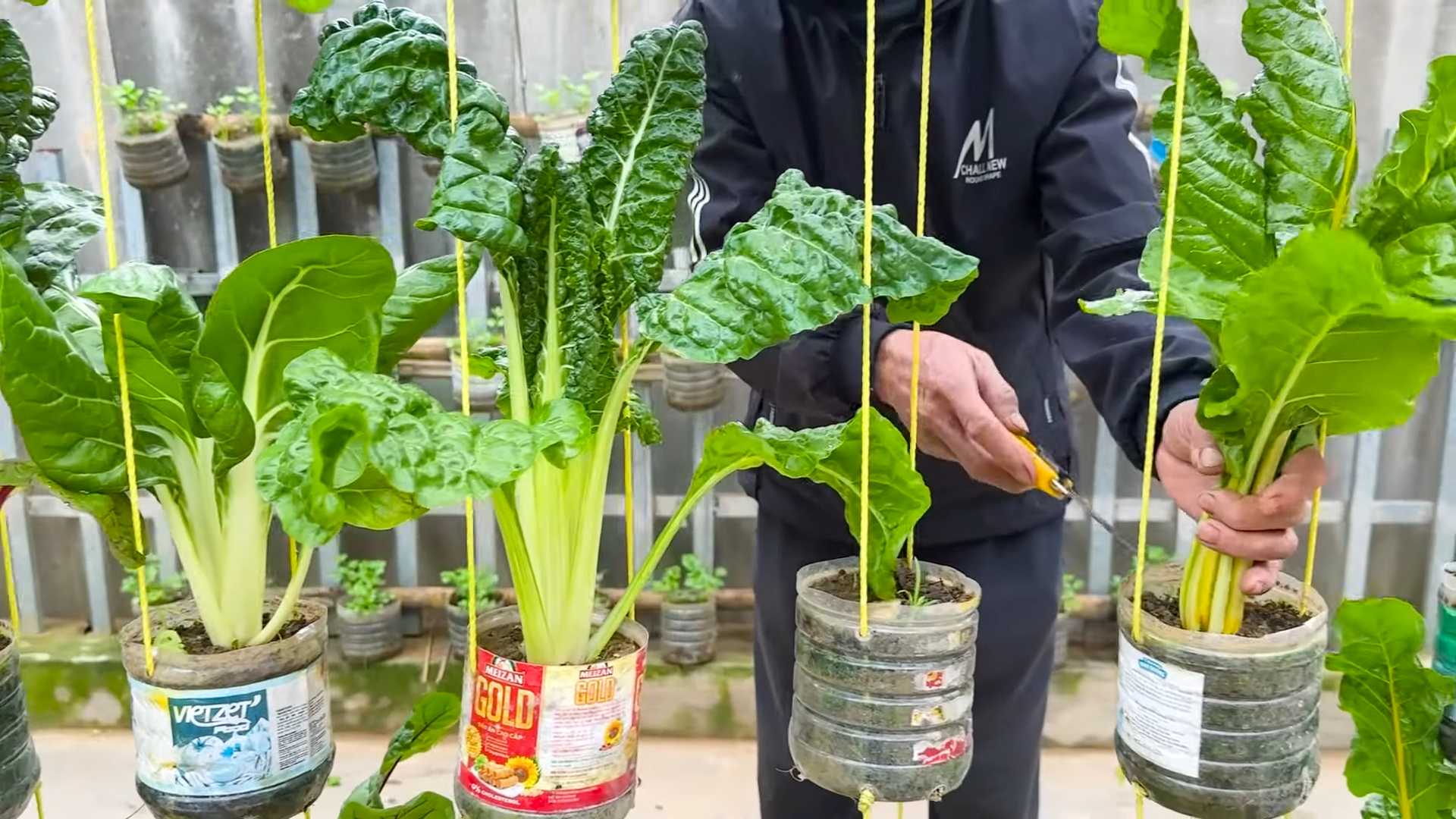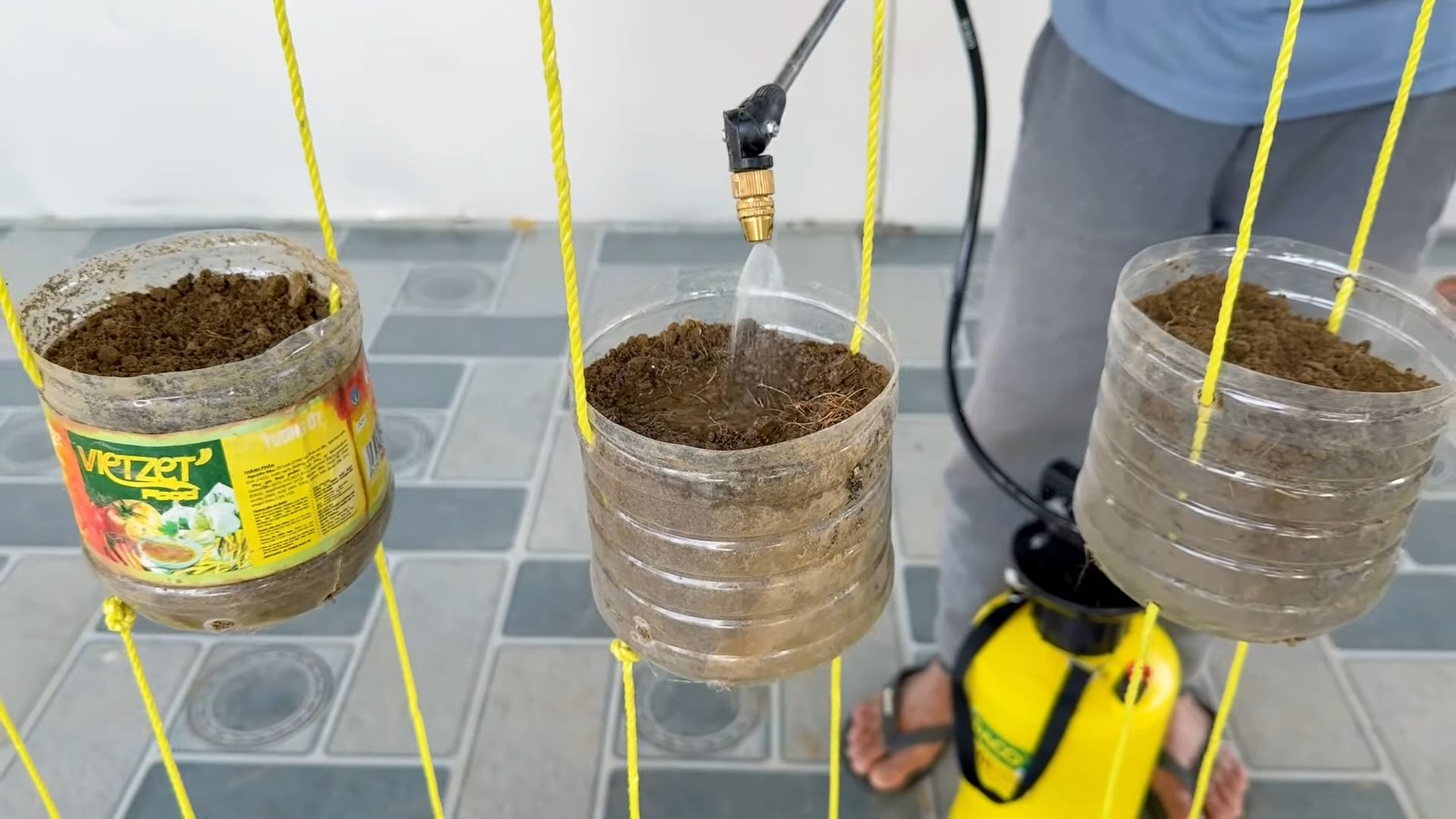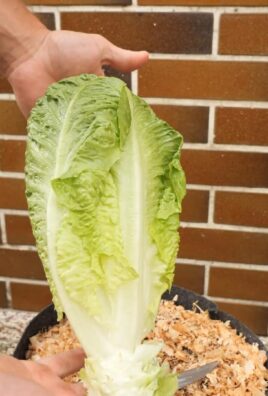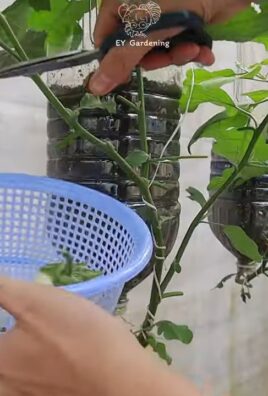Rainbow Chard Planting: Ready to add a burst of color and nutrition to your garden? I’m so excited to share my favorite tips and tricks for successfully growing this vibrant leafy green! Forget boring salads – with a little know-how, you can have a thriving patch of rainbow chard right outside your door.
For centuries, chard has been a staple in Mediterranean cuisine, prized for its versatility and health benefits. It’s even said that the ancient Greeks and Romans cultivated different varieties! But you don’t need a sprawling estate to enjoy this garden gem. Whether you have a sprawling backyard or a sunny balcony, rainbow chard planting is surprisingly easy and rewarding.
Why should you bother with this DIY project? Well, store-bought chard can be expensive and often lacks the freshness and flavor of homegrown produce. Plus, knowing exactly where your food comes from is incredibly satisfying. I’ll guide you through everything from choosing the right seeds to harvesting your colorful bounty, ensuring you have a continuous supply of delicious and nutritious greens. Get ready to roll up your sleeves and transform your garden into a rainbow of flavor!

Growing Rainbow Chard: A Colorful and Delicious DIY Guide
Hey there, fellow gardening enthusiasts! I’m so excited to share my experience with growing rainbow chard. It’s not only incredibly easy but also adds a vibrant splash of color to your garden and your plate. Trust me, even if you’re a beginner, you can totally nail this! Let’s dive in!
Choosing Your Rainbow Chard Variety
First things first, let’s talk about varieties. Rainbow chard isn’t actually a specific variety, but rather a mix of different chard types with colorful stalks. You’ll typically find seed packets labeled “Rainbow Chard” which contain a blend of colors like red, yellow, orange, pink, and white.
* Bright Lights: This is a popular mix with a wide range of colors.
* Five Color Silverbeet: Another great option for a colorful harvest.
* Individual Colors: If you prefer a specific color, you can often find seeds for varieties like ‘Ruby Red’ or ‘Golden Sunrise’.
I personally love the ‘Bright Lights’ mix because it gives me a beautiful array of colors.
Getting Started: Planting Rainbow Chard
Rainbow chard is a cool-season crop, which means it thrives in cooler temperatures. I usually plant mine in early spring or late summer for a fall harvest.
Here’s what you’ll need:
* Rainbow chard seeds
* Seed starting trays or small pots (if starting indoors)
* Potting mix (if starting indoors)
* Garden soil
* Compost or other organic matter
* Watering can or hose
* Gardening gloves (optional, but I always wear them!)
* Trowel or small shovel
Starting Seeds Indoors (Optional)
Starting seeds indoors gives you a head start, especially if you live in an area with a short growing season. I often do this to get a jump on things.
1. Fill your seed starting trays or pots with potting mix. Make sure the mix is moist but not soggy.
2. Sow the seeds about ½ inch deep. I usually plant 2-3 seeds per cell or pot to increase my chances of germination.
3. Gently water the seeds. Use a spray bottle or watering can with a gentle nozzle to avoid disturbing the seeds.
4. Place the trays or pots in a warm, sunny location. A south-facing window works well, or you can use a grow light.
5. Keep the soil moist. Water regularly, but don’t overwater.
6. Once the seedlings have a few true leaves (usually after a couple of weeks), thin them out. Leave only the strongest seedling in each cell or pot.
Direct Sowing Outdoors
Direct sowing is a simpler method, especially if you have a longer growing season.
1. Prepare your garden bed. Choose a spot that gets at least 6 hours of sunlight per day. Rainbow chard can tolerate some shade, but it grows best in full sun.
2. Amend the soil with compost or other organic matter. This will improve drainage and provide essential nutrients. I like to dig in a generous amount of compost to ensure the soil is rich and fertile.
3. Sow the seeds about ½ inch deep and 1 inch apart. I usually create shallow furrows with my finger and then sprinkle the seeds in.
4. Gently cover the seeds with soil.
5. Water the seeds thoroughly.
6. Once the seedlings emerge, thin them out to about 6-12 inches apart. This will give them enough room to grow.
Caring for Your Rainbow Chard
Once your rainbow chard is planted, it’s relatively low-maintenance. Here’s what you need to do to keep it happy and healthy:
* Watering: Rainbow chard needs consistent moisture, especially during hot, dry weather. I usually water deeply once or twice a week, depending on the weather. Check the soil moisture by sticking your finger in the soil – if it feels dry an inch or two down, it’s time to water.
* Fertilizing: Rainbow chard is a heavy feeder, so it benefits from regular fertilization. I like to use a balanced organic fertilizer every few weeks. You can also side-dress with compost or aged manure.
* Weeding: Keep the area around your rainbow chard free of weeds. Weeds compete for nutrients and water, so it’s important to remove them regularly. I find hand-weeding to be the most effective method.
* Mulching: Mulching helps to retain moisture, suppress weeds, and regulate soil temperature. I like to use straw or wood chips as mulch.
* Pest Control: Rainbow chard is generally pest-resistant, but it can be susceptible to aphids, slugs, and snails. I usually check my plants regularly for pests and take action if necessary. For aphids, I use a strong spray of water or insecticidal soap. For slugs and snails, I use beer traps or diatomaceous earth.
* Bolting: Bolting is when the plant starts to produce flowers and seeds, which can make the leaves bitter. To prevent bolting, keep the soil consistently moist and harvest the outer leaves regularly. If your plants do start to bolt, you can still harvest the leaves, but they may not taste as good.
Harvesting Your Rainbow Chard
Harvesting rainbow chard is super easy and rewarding! You can start harvesting the outer leaves when they are about 6 inches long.
1. Use a sharp knife or scissors to cut the leaves off at the base of the plant.
2. Harvest the outer leaves first, leaving the inner leaves to continue growing. This will allow you to harvest from the same plant for several weeks.
3. Wash the leaves thoroughly before using them.
I love to harvest my rainbow chard in the morning when the leaves are crisp and fresh.
Using Your Rainbow Chard
Rainbow chard is incredibly versatile in the kitchen. You can use it in a variety of dishes, including:
* Salads: Young, tender leaves can be used in salads.
* Sautéed dishes: Sautéed with garlic and olive oil is a classic way to enjoy rainbow chard.
* Soups and stews: Rainbow chard adds a nutritious boost to soups and stews.
* Smoothies: Add a handful of rainbow chard to your smoothies for extra vitamins and minerals.
* Quiches and frittatas: Rainbow chard is a great addition to quiches and frittatas.
* Stuffed dishes: Use the leaves to wrap fillings like rice, meat, or vegetables.
I personally love to sauté my rainbow chard with garlic, olive oil, and a squeeze of lemon juice. It’s a simple and delicious side dish. I also add it to my morning smoothies for a healthy boost.
Troubleshooting
Even with the best care, you might encounter a few problems while growing rainbow chard. Here are some common issues and how to address them:
* Yellowing Leaves: This can be caused by overwatering, underwatering, or nutrient deficiencies. Check the soil moisture and adjust your watering accordingly. Fertilize with a balanced fertilizer to address nutrient deficiencies.
* Holes in Leaves: This is usually caused by slugs or snails. Use beer traps or diatomaceous earth to control these pests.
* Aphids: These tiny pests can suck the sap from your plants. Use a strong spray of water or insecticidal soap to get rid of them.
* Bolting: As mentioned earlier, bolting can be caused by hot weather or inconsistent watering. Keep the soil consistently moist and harvest the outer leaves regularly to prevent bolting.
Saving Seeds (Optional)
If you want to save seeds from your rainbow chard, you’ll need to let a few plants bolt and produce flowers.
1. Allow the flowers to dry on the plant.
2. Once the seed pods are dry and brown, harvest them.
3. Crush the seed pods to release the seeds.
4. Clean the seeds by removing any debris.
5. Store the seeds in a cool, dry place.
I haven’t tried saving seeds myself yet, but it’s definitely on my gardening to-do list!
Enjoying the Fruits (and Vegetables!) of Your Labor
Growing rainbow chard is such a rewarding experience. Not only do you get to enjoy the beautiful colors in your garden, but you also get to harvest a nutritious and delicious vegetable. I hope this guide has inspired you to give it a try. Happy gardening!

Conclusion
So, there you have it! Mastering the art of Rainbow Chard Planting is not only achievable but also incredibly rewarding. We’ve walked through the essential steps, from seed selection to harvesting your vibrant bounty. But why is this DIY approach a must-try? Because it puts you in complete control. You dictate the soil quality, the watering schedule, and the overall environment, ensuring your Rainbow Chard thrives in a way that store-bought seedlings simply can’t guarantee. You’ll witness the entire life cycle, from tiny sprout to leafy masterpiece, fostering a deeper connection with your food and the natural world.
Beyond the control and connection, there’s the sheer satisfaction of nurturing something beautiful and edible from scratch. Imagine the pride you’ll feel serving a salad bursting with the colors of your homegrown Rainbow Chard, knowing you cultivated it with your own hands. Plus, you’ll be saving money and reducing your carbon footprint by avoiding commercially grown produce that often travels long distances.
But the journey doesn’t end here! Feel free to experiment with different Rainbow Chard varieties. Try ‘Bright Lights’ for a dazzling array of stem colors, or ‘Fordhook Giant’ for larger, more robust leaves. Consider companion planting with herbs like rosemary or thyme to deter pests and enhance flavor. You can even succession plant, sowing seeds every few weeks, to ensure a continuous harvest throughout the growing season.
Don’t be afraid to get your hands dirty and embrace the learning process. Gardening is all about experimentation and adaptation. What works in one garden might not work in another, so observe your plants closely and adjust your approach as needed. The key is to be patient, persistent, and passionate about nurturing your Rainbow Chard.
We wholeheartedly encourage you to embark on this Rainbow Chard Planting adventure. It’s a fulfilling and enriching experience that will bring beauty, flavor, and a sense of accomplishment to your life. And most importantly, don’t forget to share your experiences! Post pictures of your thriving Rainbow Chard on social media, tag us, and let us know what tips and tricks you’ve discovered along the way. Let’s create a community of Rainbow Chard enthusiasts, sharing our knowledge and inspiring others to grow their own food. Happy gardening!
Frequently Asked Questions (FAQ)
What is the best time of year to plant Rainbow Chard?
The ideal time to plant Rainbow Chard depends on your climate. In cooler regions, start seeds indoors 6-8 weeks before the last expected frost. Transplant seedlings outdoors after the danger of frost has passed. In warmer climates, you can sow seeds directly into the garden in early spring or late summer for a fall/winter harvest. Rainbow Chard is relatively cold-hardy and can tolerate light frosts, extending your growing season.
What kind of soil does Rainbow Chard need?
Rainbow Chard thrives in well-drained soil that is rich in organic matter. Amend your garden soil with compost or well-rotted manure before planting. A slightly acidic to neutral soil pH (6.0-7.0) is ideal. If your soil is heavy clay, consider adding sand or other drainage materials to improve its texture.
How much sunlight does Rainbow Chard require?
Rainbow Chard needs at least 6 hours of sunlight per day to thrive. However, in hotter climates, it can benefit from some afternoon shade to prevent the leaves from scorching. Choose a location in your garden that receives ample sunlight but is also protected from the harshest afternoon sun.
How often should I water my Rainbow Chard?
Water your Rainbow Chard regularly, especially during dry periods. Aim to keep the soil consistently moist but not waterlogged. Water deeply at the base of the plants, avoiding wetting the leaves, which can increase the risk of fungal diseases. Mulching around the plants can help retain moisture and suppress weeds.
What are some common pests and diseases that affect Rainbow Chard?
Common pests that can affect Rainbow Chard include aphids, flea beetles, and leaf miners. Aphids can be controlled with insecticidal soap or a strong spray of water. Flea beetles can be deterred with row covers or diatomaceous earth. Leaf miners can be controlled by removing and destroying infested leaves. Diseases that can affect Rainbow Chard include downy mildew and leaf spot. Prevent these diseases by providing good air circulation, avoiding overhead watering, and removing any infected leaves promptly.
How do I harvest Rainbow Chard?
You can begin harvesting Rainbow Chard when the leaves are about 6-8 inches long. Harvest the outer leaves first, leaving the inner leaves to continue growing. This cut-and-come-again method allows you to harvest Rainbow Chard continuously throughout the growing season. Use a sharp knife or scissors to cut the leaves near the base of the plant.
Can I eat the stems of Rainbow Chard?
Yes, the stems of Rainbow Chard are edible and delicious! They have a slightly different texture and flavor than the leaves, but they are equally nutritious. You can sauté, steam, or roast the stems. They can also be added to soups and stews.
How do I store Rainbow Chard after harvesting?
Store Rainbow Chard in the refrigerator in a plastic bag or container. It will keep for up to a week. For longer storage, you can blanch and freeze the leaves.
Can I grow Rainbow Chard in containers?
Yes, Rainbow Chard grows well in containers. Choose a container that is at least 12 inches deep and wide. Use a well-draining potting mix and water regularly. Place the container in a location that receives at least 6 hours of sunlight per day.
Is Rainbow Chard Planting difficult for beginners?
No, Rainbow Chard Planting is relatively easy, even for beginners. It’s a forgiving plant that can tolerate a wide range of conditions. With a little bit of care and attention, you can successfully grow your own Rainbow Chard and enjoy its beautiful colors and delicious flavor. The most important things are to provide well-drained soil, adequate sunlight, and regular watering. Don’t be afraid to experiment and learn from your mistakes. Gardening is a journey, and every season brings new opportunities to learn and grow.




Leave a Comment